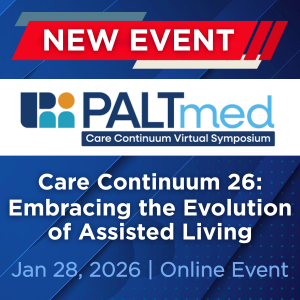CPG Pocket Guides
Showing 1 - 10 of 57 results
Clinical Practice Guidelines (CPG)
Acute Change of Condition CPG
In the post-acute and long-term care (PALTC) setting a primary goal of identifying acute change of conditions (ACOC) is to enable staff to evaluate and manage a patient at the facility and avoid the transfer to a hospital or emergency room. To achieve this goal, the facility's staff and practitioners ...
Practice Management Tools
Advance Care Planning (ACP) Pocket Card (set of 5)
The Advance Care Planning (ACP) Pocket Card provides a quick reference to discussing advance care decisions with your patients. The professional is assisted in encouraging patients to consider the full range of issues informing the very personal decisions that comprise advance care planning. The ACP...
Clinical Practice Guidelines (CPG)
Altered Nutritional Status CPG
Weight has emerged as a principal screening and monitoring indicator in post-acute and long-term care (PALTC) because it is easy to measure and the measurement is reasonably accurate and reproducible, noninvasive, acceptable to most patients, and relatively inexpensive to obtain. Among patients who remain ...
Clinical Practice Guidelines (CPG)
Anemia CPG
Anemia is common in the post-acute and long-term care (PALTC) setting, with a prevalence ranging from 34 - 60%, increasing with each decade of life over age 70. Anemia often goes unevaluated or is inadequately evaluated in the frail elderly. Studies suggest the importance of treating anemia to improve pati...
Long Term Care Information Series
Anemia in the Long-Term Care Setting
Anemia is a common problem in the post-acute and long-term care setting (PALTC) and can be associated with increased morbidity and reduced quality of life. Anemia is associated with increased disability, decreased physical performance, decreased muscle strength, increased risk of cardiovascular events, imp...
Practice Management Tools
Assisted Living Facility Medical Director Agreement
The Assisted Living Facility Medical Director’s Contract template is designed to be a model agreement for Assisted Living Facilities (ALFs) who are interested in contracting with a physician to provide oversight of medical services. Given the increased levels of medical complexity that is becoming more com...
Long Term Care Information Series
Atrial Fibrillation in the Long-Term Care Setting
Atrial Fibrillation (AF) is a serious health problem, the most common arrhythmia requiring hospital admission, and is associated with an increase in mortality. Because the prevalence of AF increases steadily with age, the number of patients in the post-acute and long-term care (PALTC) setting who have or a...
Long Term Care Information Series
Clinical Collaboration in the Post-Acute & Long-Term Care Setting
Teamed with physicians, advanced practice nurses (APRNs) and physician assistants (PAs) may enhance the nursing and medical care available to post-acute and long-term care facility patients. Driven by documented positive outcomes and favorable legislation, the presence of the APRNs and PAs continues to gro...
Long Term Care Information Series


